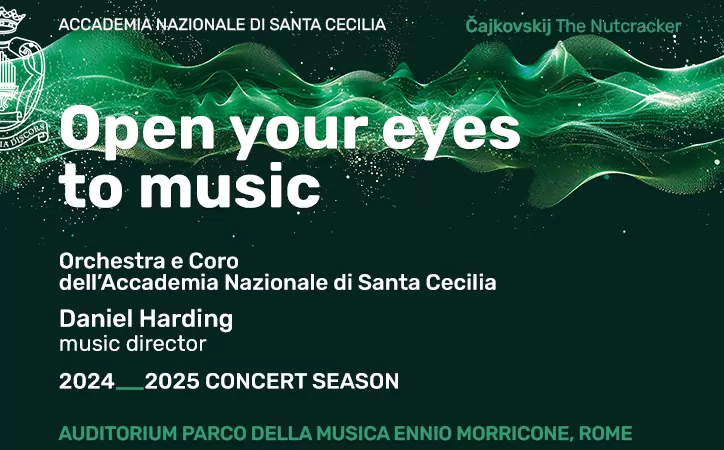The modern "City di Roma"
There are two types of people, says Raffaele Ranucci. Those who make problems and those who resolve them. We belong to the latter group. The president of EUR Spa is not shy about explaining the companys reputation for efficiency and innovation. EUR Spa is involved in managing and developing a part of Rome that is full of surprises and has plenty of potential. While EUR is not on the same level as planned or redeveloped districts in other cities, such as La Dfense in Paris or Canary Wharf in London, it is seen by some as Romes strongest asset for the future.
The Ente Autonomo Esposizione Universale di Roma (Ente EUR) was set up in 1936 to organise the E42, a grand exhibition envisioned by Mussolini as a sort of olympic games of civilisation, originally scheduled for 1942 but delayed because of the war. In the 1950s the project was resumed, but with a view to creating a new, well-planned quarter for the city rather than a temporary exhibition. In 2000 Ente EUR became EUR Spa, whose stocks are owned 90 per cent by the treasury ministry and 10 per cent by the city administration. It manages over one million square metres in buildings (including offices, schools, sports stadiums, museums and the Fungo, a water tower topped with a panoramic restaurant), parks (including Luna Park funfair) and land for construction worth an estimated 650 million. Streets and parking facilities remain in the hands of the city council. Ranucci, who is EUR-born and bred, has been leading the organisation since 1999 with his contagious can-do attitude.
In a recent press conference the president of the XII municipio (which includes EUR), Paolo Pollak, admitted that it was an unusual situation to work alongside a company whose duties and interests often overlap with those of the city administration. But although the two organisations work well together, they are worlds apart. EUR Spa is, by Ranuccis definition, a group of business-led entrepreneurs, whereas the municipio is politically led. The company has been able to use new technologies, experiment with unusual architectural ideas and consider new types of financing for its projects. Municipi are rarely so free, or so long under the same leadership.
To many people EUR is irrevocably linked to the fascist era. In a recent bout of publicity, Italian and international newspapers reported the rediscovery of Mussolinis secret bunker, an air-raid shelter underneath EUR Spas headquarters in Largo Virgilio Testa. At the mention of the discovery Nunzio Carretta, a property manager at the firm, rolls his eyes. We always knew it was there, he says with a tired smile. Someone just happened to dig up the architectural plans for the building in the Archivio di Stato. You get the impression that EUR Spa would rather be in the newspapers for its work than for its historic legacy.
EUR Spa owns and rents out EURs most important buildings, but it is more than just a landlord. The area is promoted as la moderna City di Roma, implying a well-rounded, planned quarter. This in itself is a novelty for Rome since, unlike the UK, there is no historic tradition of planning regulation in Italy, nor has controlling land use been a political priority. Ranuccis interpretation of urban planning is to preserve the various souls of EUR, giving equal importance to land for commercial property, leisure and sports facilities, cultural resources and business meetings. These souls are supported by an infrastructure of transportation, technology and management of facilities.
The most exciting thing about EUR, however, is its architecture, both the original rationalist buildings and the plans for new or redeveloped ones. The most important project currently in the pipeline is the Centro Congressi Italia, architect Massimiliano Fuksas innovative conference centre with a cloud-shaped structure suspended in its middle. The centre will be built on the 3-ha site between Via Cristoforo Colombo, Viale Asia, Viale Shakespeare and Viale Europa. The planning stage of this project should come to an end in mid-December. Although there are already a number of meeting and exhibition centres in EUR, the Centro Congressi Italia will be the largest (at 20,000 sqm) and the most modern by far, and is set to become a landmark that will also attract international clients.
Another major project is the restructuring of the Palazzo dello Sport (Palasport), which is due to reopen at the end of January after about two and a half years of closure. The domed, UFO-like structure will reopen to sport events (capacity 11,200 spectators) and concerts (capacity 9,000), with improved amenities and acoustics. The renovation was the first experiment in Rome of project financing, where a group of private investors fronts the cost of work in exchange for the right to manage the building for a given number of years. Members of the Palasport group have organised major events including concerts by Bruce Springsteen and Prince in Milan, and in Rome Fiesta!, one of the most successful initiatives of the Estate Romana.
There are plenty of smaller projects at a local level. EUR Spas most recent campaign, Punto Parco, aims to make EURs parks safer and more appealing places for its residents. The first step was a new lighting project in the Parco del Turismo, the large park in the northwest part of the quarter. The second was choosing an architectural plan for service areas in parks, including restaurants, libraries and play centres for children.
However, EURs imposing architecture can also be a problem. While the buildings have great potential as office space, they do present practical challenges. Convincing clients to invest in finding solutions (space division, temperature control, etc) for vast, open-plan spaces with extremely high ceilings, for example, can be difficult, especially in a time of economic downturn. These monumnetal buildings are better suited as museums than as offices. And as far as museums are concerned, EUR has reached saturation point, especially if the project to turn Palazzo della Civilt Italiana (the square Colosseum) into an audiovisual museum goes ahead. EUR Spas main challenge lies in turning these monumental structures into something that will generate a cash flow.


















